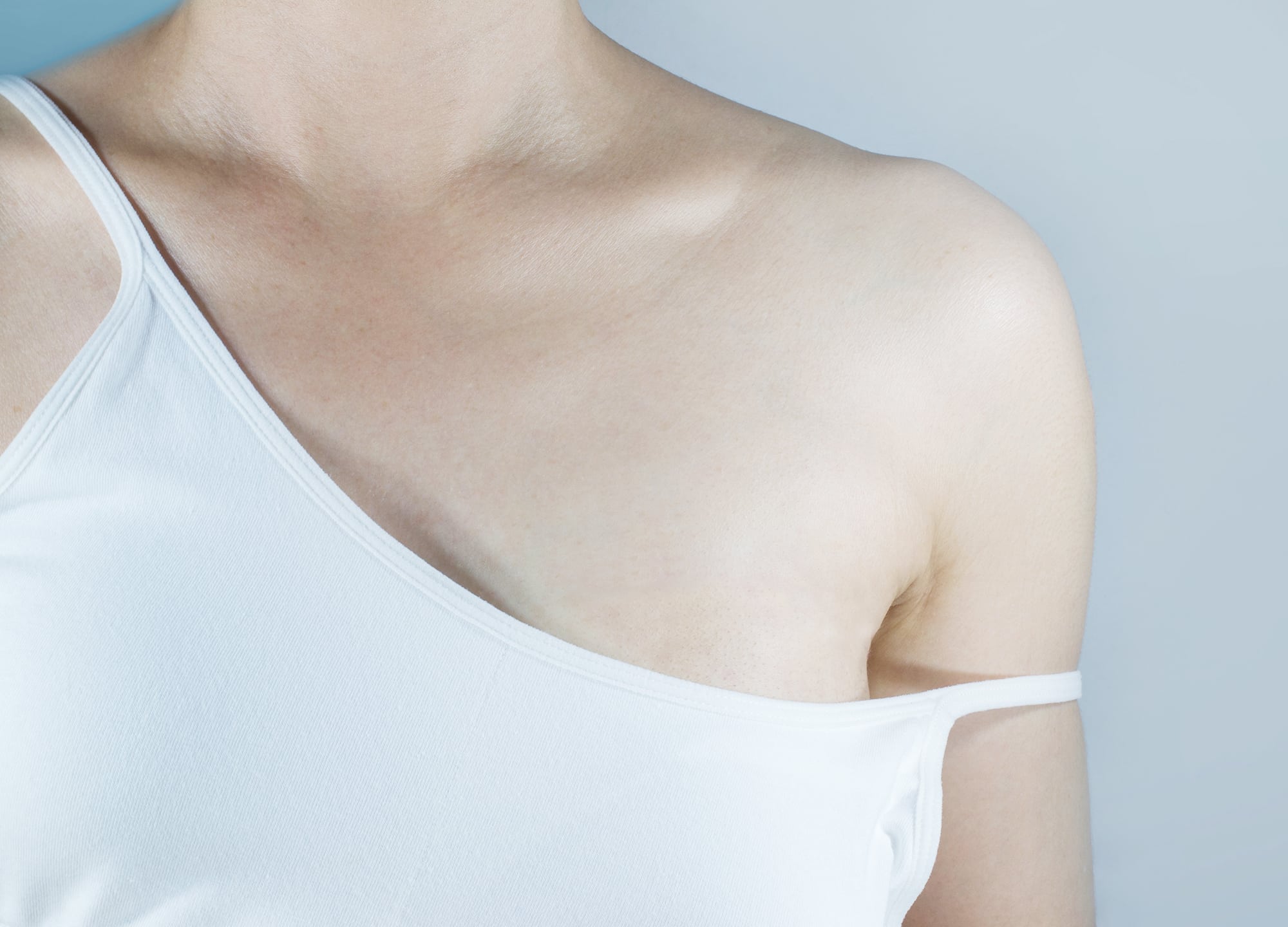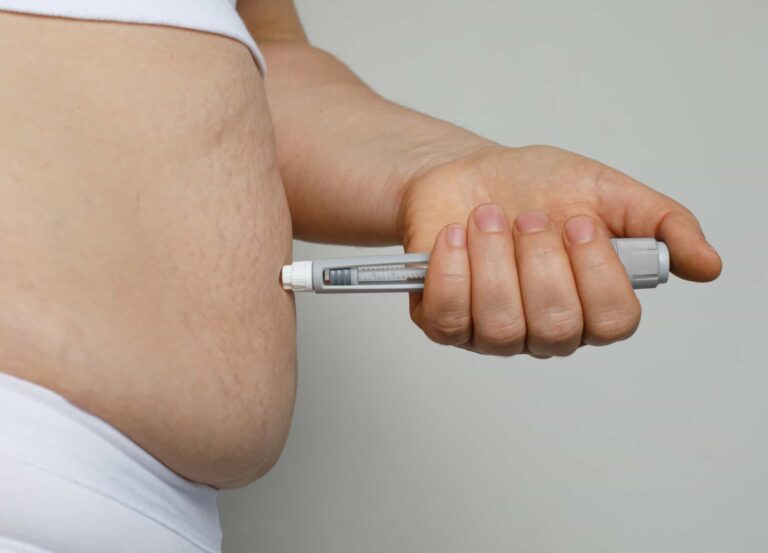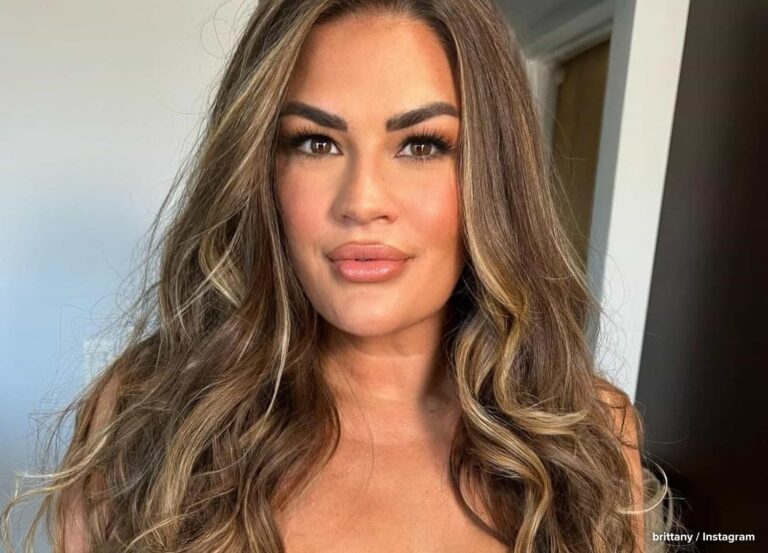The restoration route a woman chooses after a lumpectomy or mastectomy is intensely personal. “We don’t know what’s going to make each person feel whole again,” says Dr. Allen Gabriel, founder of the Pink Lemonade Project and medical advisor for the BRAVE Coalition Foundation, which educates breast cancer patients and advocates on their behalf. “It can be as simple as a decorative tattoo on your chest or go as far as a full restoration.” Others choose to stay flat or, at least, wait a few years before breast reconstruction. The most important factor is what feels right to you.
According to the American Cancer Society, one in eight women will be diagnosed with breast cancer over the course of a lifetime. The BRAVE Coalition says that less than 30% of them know about their breast reconstruction options. To help you navigate them, here are five key things to know.
1. Breast reconstructive surgery techniques are better than ever.
There are three primary breast reconstruction techniques: implants, autologous (or flap) reconstruction that uses tissue taken from other areas of your body and a combination of the two. According to Dr. Gabriel, about 75% of all breast restorations use implants, with the rest being flap reconstruction or a combination.
Breast implant technology has improved dramatically in recent years, with gummy cohesive-gel implants replacing an older generation of silicone implants that carried a higher risk of leaks.
More surgeons are also switching to pre-pectoral (above-the-muscle) reconstruction, which creates better aesthetic and functional results because the implants are less prone to movement. “It’s a good option for younger breasts,” explains Beverly Hills, California, plastic surgeon Dr. Lisa Cassileth. “If the breast is older and drooping, there’s a risk that the implant can just hang.” Talk with your surgeon about which option is best for you—but keep in mind that if they don’t offer the option of placement above the muscle, they might not have experience in the latest techniques.
Dr. Anne Peled, a plastic surgeon in San Francisco who’s a recent survivor herself, is thrilled to be able to offer women better restoration options.
“The past five years have been huge,” she says. “We have microsurgery for autologous (flap) reconstructions [using your own tissue], which can allow for muscle-saving reconstructions like DIEP, a type of flap surgery that uses your lower-stomach skin and fat to reconstruct your breast. A lot more people are combining flaps with implants.” She also likes to add fat transfer from other areas of the body, to create more fullness or help reconstructed breasts look more natural.
Dr. Peled also cites improvements in lumpectomy reconstruction. “The majority of women with breast cancer in this country are having lumpectomies for their breast cancer surgery, but they don’t know there are good reconstruction options for them too—everything from filling in a divot with fat transfer so they aren’t reminded that they had cancer to making your breasts look better than before” by combining restoration with a breast reduction or lift.
There’s also a new “Goldilocks” technique, in which a surgeon creates a breast out of excess skin. “If a patient is afraid of implants because they don’t want something foreign in their body but they don’t want a long surgery, this is an option worth exploring,” says Dr. Cassileth. “There are only a handful of surgeons in the United States who perform this right now, but it’s going to be huge.” Unlike flap surgery that uses fat and muscle tissue, Goldilocks uses the skin and subcutaneous fat make up the new breast. Since extra skin is removed, it feels like a real breast—but potentially firmer.
Dr. Cassileth recommends this type of restoration for women with a size C cup or larger in order to create an A or B cup. In a person with a higher body mass index, sometimes this surgery is combined with implants, for a more natural look and feel.
One benefit of free-flap, autologous reconstruction is the possibility of restoring sensation to the breast tissue using a new surgical technique called Resensation. At this point, it’s being performed only in a little over a dozen states, and it can be done solely with free-flap reconstruction surgery (not with implants). “The surgeon takes an intercostal nerve that goes into the breast and dissects some of it out of the mastectomy specimen. The nerve is then connected to a graft that leads to the nipple,” Dr. Cassileth explains. This procedure provides the nerve with a roadmap for regrowth through the breast to your nipple.
2. You should be able to keep your nipples.
As long as there isn’t cancer in or near your nipples, there should be no downside to keeping them. According to a 2017 study, the recurrence rate of breast cancer for women who’ve kept their nipples is no higher than that after a standard (or total) mastectomy.
“The No. 1 question you should ask your plastic surgeon is what their nipple necrosis rate is,” says Dr. Cassileth, adding that ideally, they will say it happens occasionally but is very rare. A good mastectomy keeps the blood flow all around the edges of the breasts. Necrosis happens when there isn’t enough blood flow to the skin and the tissue begins to break down, which causes the nipples to die and lose sensitivity.
“If a surgeon tells you that it’s not safe to keep your nipples even though there’s no cancer in them or that there’s a high chance a chest like yours will kill the nipple, they’re not skilled enough to perform your surgery,” Dr. Cassileth states.
3. Health insurance should cover your breast reconstruction, but it doesn’t always.
Signed into law in 1998, the Women’s Health & Cancer Rights Act (WHCRA) was put into place to help protect women with breast cancer who choose to undergo restoration after a mastectomy or lumpectomy. It requires that most group insurance plans that cover mastectomies also cover restoration, including creating symmetry with the unaffected breast.
However, each state interprets this federal law differently. You also have to take into account which insurance plan you’re on and other variables that will impact your deductible. Even if your state is working in your favor, it doesn’t mean insurance will cover the whole cost. Call your insurance provider to find out exactly what’s covered.
Restoration surgery: Under WHCRA, most insurance companies are required to cover the reconstruction method of your choice. If you can’t find a skilled surgeon in your state and decide to travel, look further into your coverage, since each state mandates the law differently. If you have employer-sponsored insurance, the state you live in governs the insurance. Sorting this out on your own can be a headache, so some breast reconstruction centers with a lot of out-of-state patients have their own legal services that will ensure you’ll receive full benefits.
Revision surgery: Most insurance companies are required to cover as many revision procedures as you need or want down the road, even years after your initial reconstruction. However, the coverage here isn’t black and white either—and some insurance companies try to push back, if there’s no medical reason.
According to Dr. Gabriel, one reason insurance companies fight coverage in this area is because the products are getting more expensive. Some doctors do perform these surgeries pro bono, he says. “Revision surgery is necessary if the patient is uncomfortable. If there are indentations or the implant has hardened, insurance plans should cover the procedure—but that doesn’t mean we’re getting reimbursed.”
Because WHCRA lives in a gray area, “some doctors aren’t telling their patients about their restoration options, because they understand the cost and don’t want to get people’s hopes up,” explains Morgan Hare, cofounder of the AIRS Foundation. The best thing you can do is become informed and ask questions.
4. It’s worth the time to research and build your surgery team.
When you’re diagnosed with breast cancer, the first thing you want is for the cancer to be gone as soon as possible. Some patients with late-stage cancers are rushed into a mastectomy within a week or two.
If you have the luxury of more time, Dr. Gabriel recommends slowing down and exploring all the possibilities. “People who rush into surgery often regret their decision later on,” he says. Taking a few weeks to research, have consultations and make a fully informed decision about your initial surgery and reconstruction will benefit you in the long run.
“Women need to know their options ahead of time so they’re fully aware of what is in-network, what they can do, who can perform it and what the cost will be,” explains Katie Holmes, executive director of the BRAVE Coalition Foundation. “They also need to gather a skilled team of doctors, including a breast surgeon and plastic surgeon.”
Instead of looking at a plastic surgeon as an afterthought, ask your breast surgeon for recommendations and schedule several consultations with board-certified surgeons who specialize in breast reconstruction before your cancer surgery. Ideally, the two will work together to create a plan.
If you won’t need radiation after your cancer surgery, your surgeons may even be able to perform the mastectomy and reconstruction in the same session, which can create a much better aesthetic result. It also saves you another round of general anesthesia and recovery as well as the potential for the emotional toll of living without breasts for a time.
Ask these essential questions at your breast reconstruction surgery consultations. If you can’t bring a family member or close friend with you, ask if you can record the surgeon’s answers so that you can listen and compare them later. There’s a lot of information to absorb, and it can be easy to forget key details during an emotionally exhausting time.
Related: I Had Triple-Negative Breast Cancer and Got a Double Mastectomy
5. You’ve got support options beyond friends and family.
For some people, talking with other breast cancer survivors can be very reassuring. At a time when it’s hard for people who haven’t been through cancer to know the right thing to say, they may have more empathy because they’ve been there.
You can look beyond your own network to organizations like these that offer mentorship and other kinds of support.
The American Cancer Society’s Reach to Recovery program helps support women through their breast cancer experience by working with trained volunteers who offer in-person visits or phone calls.
The BRAVE Coalition provides women with knowledge of their rights and options for breast reconstruction following diagnosis so they can make an informed, empowering choice.
The Pink Lemonade Project offers a mentorship program lead by women who have gone through breast cancer restoration and have been trained and certified to help you through this difficult time.
The AIRS Foundation gives women an advocate and helps them pay for reconstructive surgery through grants.
The Pink Daisy Project supports women by providing comfort to help them cope with their diagnosis.
Navigating your breast surgery and reconstruction options can be overwhelming—but you don’t have to do it alone.











